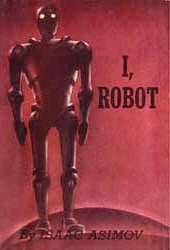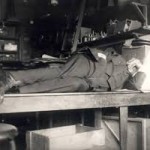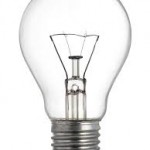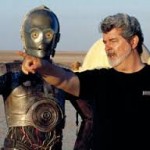 New technologies are making it possible to use brain data to create video reconstructions of people’s dreams while they sleep. Is this thrilling, terrifying, or both?
New technologies are making it possible to use brain data to create video reconstructions of people’s dreams while they sleep. Is this thrilling, terrifying, or both?
Here’s how it works. Researchers are learning how to observe an individual’s brain while viewing a specific image (let’s say a cat) and how to identify neural patterns correlated with that image. Then the researchers observe the individual’s brain while sleeping, and watch for a recurrence of the “cat” neural pattern. If it appears, a signal can be sent to a video monitor to show an image of a cat—presumably what the sleeping person is dreaming about at that very moment.
Does this mean we will soon be able to sit in front of a “dream-viewer” (an iDreamer?) to watch videos of our own dreams, along with the dreams of other people?
Soon, probably no. But someday, possibly yes. Many technical challenges have to be overcome first. Lots of time and effort are required to train the computer algorithms to recognize the patterns of an individual’s brain. The patterns for “cat” from one person’s brain do not necessarily match the “cat” patterns from another person’s brain, so the system has to be trained and calibrated anew for each individual. The nearly infinite variety of dream content magnifies the learning challenge for this kind of technology (how many images of different kinds/colors/sizes of cats need to be incorporated into the system?). Efforts to model the contents and experiential qualities of dreams have to find some way to reckon with a boundless, unpredictably varied set of data.
Advocates will emphasize the potential benefits if these methodological challenges can be overcome. Researchers would, for the first time, have “objective” dream data, unfiltered by the subjective biases and limited memories of the dreamer. For anyone who looks to dreams for personal insight and guidance, this technology offers a quantum leap in the depth and range of access to one’s dreaming experience. For example, psychotherapists would have a powerful new resource for understanding the unconscious conflicts, fears, and concerns of their clients.
All of these potentially positive applications sound appealing, of course. But no less time should be given to considering the potentially negative applications, too. Between now and the invention of a true “dream-viewer,” we should consider several ethical questions raised by this technology.
Does the process of training and calibrating the system disrupt the natural rhythms of people’s sleep and dreams? If yes, what are the long-term health risks and psychological dangers of that disruption? This basic question is too rarely asked in discussions of new dream technologies, perhaps because of an unspoken assumption that dreams themselves aren’t really “real,” so nothing that harms dreaming does any real harm to a person.
What is the source of the images used to reconstruct people’s dreams? Who chooses those images? Is there transparency in the algorithms that correlate specific images to specific neural patterns? Are measures taken to prevent biases from excluding the appearance of certain kinds of images and favoring others?
Does the technology distort and flatten the contents of people’s dreams? It seems likely a dream-viewer will be incapable of representing bizarre or anomalous experiences for which there are no images. It will struggle to represent essential elements of dreaming like feelings, thoughts, and bodily sensations. It won’t be able to convey non-imagistic qualities of intensity, atmosphere, or awareness. Jorge Luis Borges noted these qualities when he described a nightmare of an ancient King standing by his bed: “Retold, my dream is nothing; dreamt, it was terrible.” (Seven Nights, 1980) Will a dream-viewer ever be able to convey the ineffable terror in a nightmare like the one Borges experienced? It seems unlikely. Videos will show what videos show, not what dreams are in any full or objective sense.
Who gets access to the dream-viewers? What is done with this incredibly personal source of information? It takes little imagination to envision potential abuses of this technology for commercial, political, governmental, and/or criminal purposes. The prospect of bad actors gaining access to private details so secret even the individual does not consciously know them should be a red-flag concern for any technology that is openly offering an unfiltered view into people’s dreams.
Can this technology be re-engineered to manipulate the process and contents of dreaming itself? What if a tool designed to identify neural patterns associated with dreaming could be re-purposed to selectively target specific patterns either for suppression or stimulation? This seems to lead into Inception territory, making people vulnerable to an unprecedented depth of external control and manipulation.
How much dream awareness can people handle? An earlier and even more direct film reference to this kind of technology appears in Wim Wenders’ futuristic film Until the End of the World (1991), in which the equivalent of a dream-viewer has been invented. The CIA is determined to steal the device, which of course is not a fantastical idea at all. If and when a dream-viewer is created, CIA interrogators would surely be at the front of the line to get one. More unexpectedly, the characters in the movie who use the device become lost in the narcissistic labyrinths of their own fantasies. They detach from the rest of the world, retreating into a video womb of reconstructed dreaming. Here, the technology’s danger is not from abuse by others, but from our own abuse of it. We assume that more insight into our dreams is a good thing, but is that true for everyone? Do each of us have a healthy limit of dream awareness, beyond which we become lost in ourselves?
Final Thought
Dreaming is an innate function of the brain-mind during sleep. It is also an experience that humans from around the world and all through history have considered vitally important, meaningful, and useful in their waking lives. Any new technology that has the potential, whether intended or not, to disrupt the natural rhythms of people’s sleep and dreaming needs to be publicly evaluated in terms of its long-term risks and benefits.
Note: this post first appeared in Psychology Today, 6/8/21.

 The world’s biggest yearly gathering of dream researchers, teachers, artists, and therapists is less than two weeks away.
The world’s biggest yearly gathering of dream researchers, teachers, artists, and therapists is less than two weeks away. In August of 1991 I joined a group of dream researchers from the U.S. and Western Europe on a journey to Golitsyno, a conference center just outside Moscow in the former Soviet Union, where we planned to meet several Soviet researchers for a gathering organized by Jungian analyst Robert Bosnak. Just hours after our plane landed in Moscow on August 19, the airport was suddenly shut down by the Red Army; a
In August of 1991 I joined a group of dream researchers from the U.S. and Western Europe on a journey to Golitsyno, a conference center just outside Moscow in the former Soviet Union, where we planned to meet several Soviet researchers for a gathering organized by Jungian analyst Robert Bosnak. Just hours after our plane landed in Moscow on August 19, the airport was suddenly shut down by the Red Army; a 








